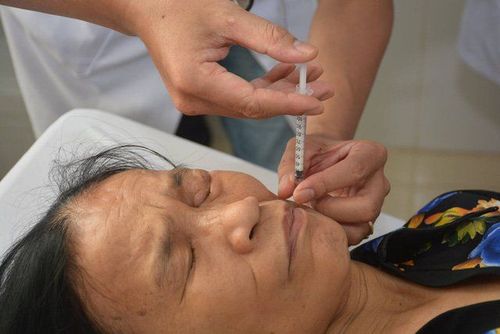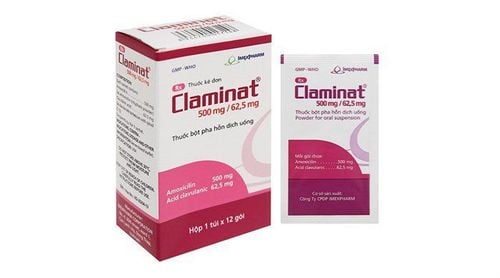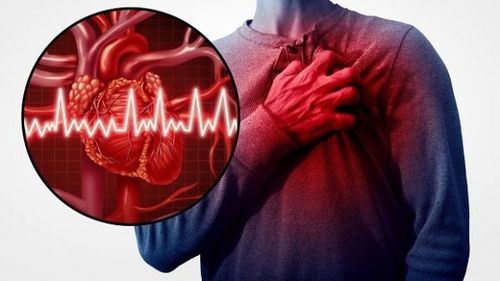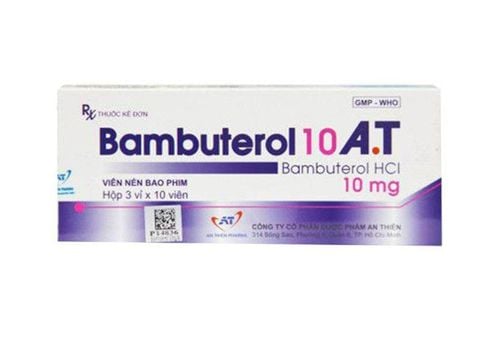This is an automatically translated article.
Hemifacial spasms are characterized by involuntary unilateral contractions of the muscles located in the facial nerve. This is a benign condition but can cause significant cosmetic and functional disability. Besides microvascular decompression intervention, botulinum toxin injection to treat hemifacial spasm is more commonly applied.
1. What is botulinum toxin injection in the treatment of hemifacial spasm?
Hemifacial spasm is a condition characterized by involuntary contractions of the muscles on one side of the face. The cause of hemifacial spasm is damage to the facial nerve near the origin of the brain stem.
Although not dangerous, hemifacial spasm often causes aesthetic and functional problems, and can affect the professional and social life of the patient as well as indirectly affect the health of the patient. health and economy. This is a chronic disorder that is unlikely to heal on its own.
Botulinum toxin is a powerful natural chemical that can cause severe paralysis (inability to move in a part of the body where it is applied) in animals and humans. Because of this, botulinum toxin injections can be used to treat many conditions, especially those with involuntary muscle contractions, such as facial spasms. Botulinum toxin is administered by injection into the muscles that cause contractions, helping to reduce symptoms. There are different types of botulinum toxin, not all of which are suitable for the treatment of hemifacial spasms. However, injections of botulinum toxin are often considered the first-line treatment in facial spasms.
2. How to inject botulinum toxin to treat hemifacial spasm?
In most cases, the patient does not need to do any special preparation before injecting botulinum toxin.
On the scheduled injection day, the patient will go to the hospital or clinic to be injected with botulinum toxin by the doctor. The doctor will use a needle to inject the appropriate amount of botulinum toxin into the areas around the eyelids and eyebrows. After the injection, the patient can go home immediately and resume normal activities as usual. However, you need to be careful not to rub the injection sites. This can cause the poison to spread to other areas, causing unwanted effects.
The entire process of botulinum toxin injection takes only a few minutes. Improvement in symptoms should be achieved gradually over 1 to 14 days. However, the effectiveness of botulinum toxin injection for the treatment of hemifacial spasm is not permanent. Usually, the effects of the injections will last 3 months. Therefore, the patient will be scheduled for a follow-up appointment to re-evaluate the movement disorder status. At this point, your doctor will consider repeat injections as needed, but sooner when symptoms start to return.
In case the patient does not notice any improvement or if the change is very minor after receiving botulinum toxin injections for hemifacial spasm, an early follow-up visit is necessary. At this point, the doctor can decide to adjust the additional injection dose, increase the injection sites or the type of injection.

Bác sĩ thực hiện tiêm botulinum toxin để điều trị co thắt nửa mặt
3. Possible complications after botulinum toxin injection?
Botulinum toxin injections are a safe treatment for hemifacial spasms. However, this treatment can still face side effects, the most common are:
Pain, swelling or bruising at the injection site Dry eyes: Symptoms of dry eye disease include irritation and sensitivity to light. shining. If you have dry eyes, you can use artificial tears or ointments to help keep your eyes moist. In addition, less common side effects of botulinum toxin include:
Upper eyelid drooping Double vision Fortunately all these side effects are temporary and will go away on their own. However, in rare cases, botulinum toxin injections can cause muscle weakness, loss of bladder control, difficulty breathing or swallowing, requiring immediate medical attention or hospitalization for prompt intervention.
In a nutshell, hemifacial spasm is a neuromuscular movement disorder that affects the muscles activated by the facial nerve, causing involuntary twitching on one side of the face. The treatment of such hemifacial spasms is often the preferred initial treatment with botulinum toxin injections. Most patients have a favorable response to botox injections. However, even though the botulinum toxin injection process is simple, this intervention needs to be done properly by an experienced doctor to avoid unwanted effects or serious complications.
Please dial HOTLINE for more information or register for an appointment HERE. Download MyVinmec app to make appointments faster and to manage your bookings easily.
References: med.umich.edu, ncbi.nlm.nih.gov, umms.org













